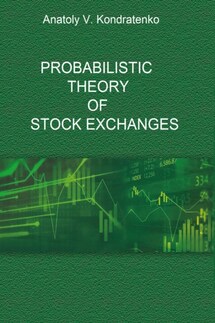Probabilistic Economic Theory - страница 23
Strictly speaking, all these principles of maximization, both in economics and physics, are in essence a set of hypotheses. Their validity or effectiveness can be confirmed only via practical calculations and comparison of their results with the respective known laws and phenomena, as well as with the relevant big empirical data. But intuition suggests that this way of developing economic theory is most optimum at the present time. Since it is presently not known how to derive equations of motion in economics, borrowing existing theoretical structural models from physics is helpful. Since analogies can be drawn between the spaces and features of both physics and economics, we can use skeuomorphism and transfer the design models from the one discipline to the other.
We understand that in principle, equations of motion for economics can be derived with the aid of the market-based trade maximization principle. To be honest, we do not fully understand how this exactly works. According to some indirect signs, we can only surmise that the market-based trade maximization principle and maximization principles borrowed from physics, work in one direction. We will examine this more specifically in Chapter VIII.
References
1. A.V. Kondratenko. Physical Modeling of Economic Systems. Classical and Quantum Economies. Nauka (Science), Novosibirsk, 2005.
PART B. Classical Economy
“The classical economist sought to explain the formation of prices. They were fully aware of the fact that prices are not a product of the activities of a special group of people, but the result of an interplay of all members of the market society. This was the meaning of their statement that demand and supply determine the formation of prices… They wanted to conceive the real formation of prices – not fictitious prices as they would be determined if men were acting under the sway of hypothetical conditions different from those really influencing them. The prices they try to explain and do explain – although without tracing them back to the choices of the consumers – are real market prices. The demand and supply of which they speak are real factors determined by all motives instigating men to buy or to sell. What was wrong with their theory was that they did not trace demand back to the choices of the consumers; they lacked a satisfactory theory of demand. But it was not their idea that demand as they used this concept in their dissertations was exclusively determined by “economic” motives as distinguished from “noneconomic” motives. As they restricted their theorizing to the actions of businessmen, they did not deal with the motives of the ultimate consumers. Nonetheless their theory of prices was intended as an explanation of real prices irrespective of the motives and ideas instigating the consumers”.
Ludwig von Mises. Human Action. A Treatise on Economics. Page 62
CHAPTER III. Classical Economies in the Price Space
“Prices are a market phenomenon. They are generated by the market process and are the pith of the market economy. There is no such thing as prices outside the market. Prices cannot be constructed synthetically, as it were. They are the resultant of a certain constellation of market data, of actions and reactions of the members of a market society. It is vain to meditate what prices would have been if some of their determinants had been different. Such fantastic designs are no more sensible than whimsical speculations about what the course of history would have been if Napoleon had been killed in the battle of Arcole or if Lincoln had ordered Major Anderson to withdraw from Fort Sumter.







